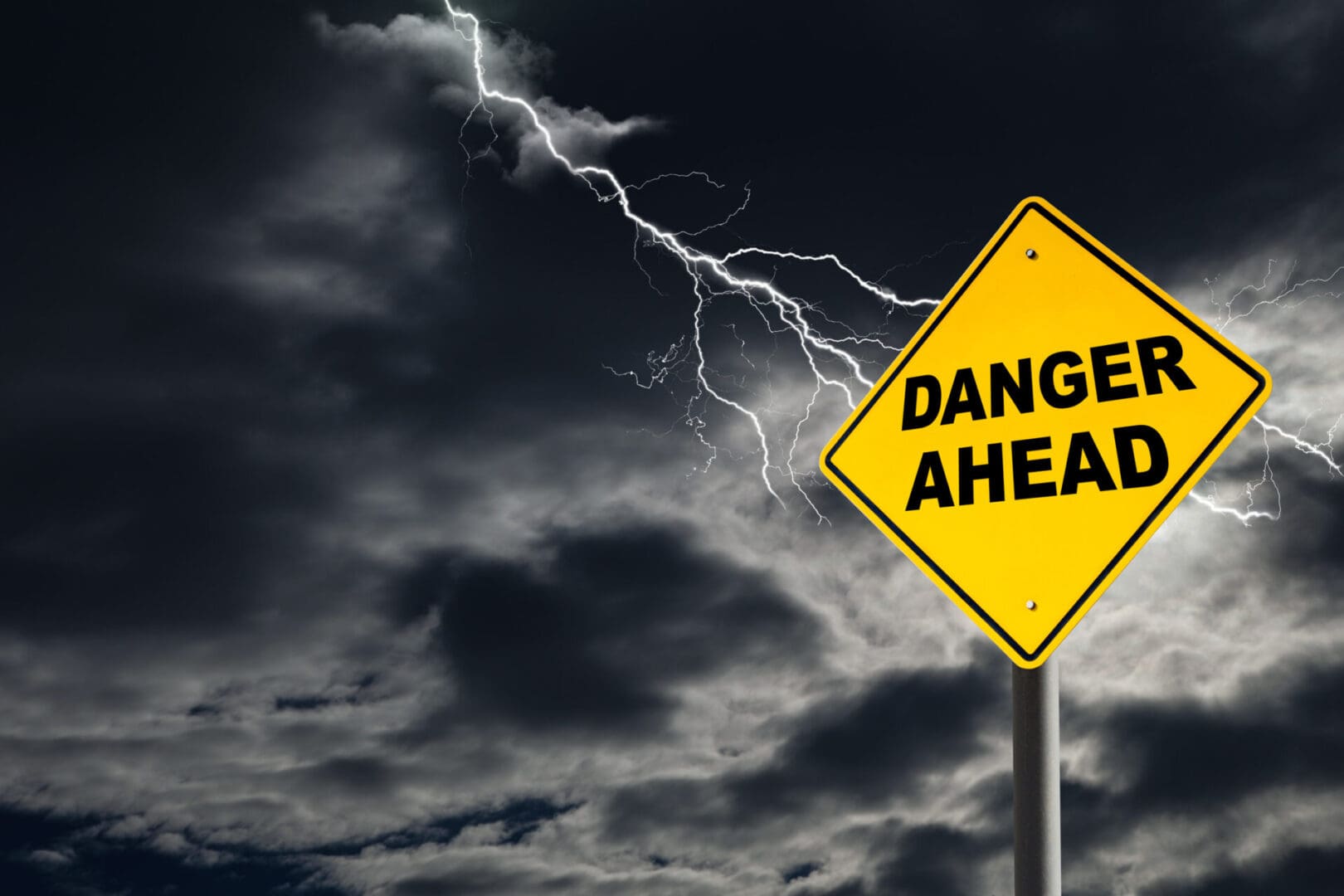Is this a red flag that I observed in a potential romantic partner? Is her excessive spending or his substance use a dealbreaker? I (Aleisha) recently got out of a serious, long-term relationship with someone who I knew deep down was not right for me, but I fell in love with the potential of what they could be. From the beginning, I ignored the writing on the wall, and warning signs continued to present themselves throughout the duration of the relationship. I looked past finding out that they cheated in past relationships, their hesitancy when the time for commitment came up, and the warnings I received from mutual friends. This was all just before we started our relationship. I had several reasons and opportunities to step away from the situation, and save myself time and heartbreak, yet I ignored the danger signs, and proceeded forward.
What is a Red Flag?
“A relational red flag is any undesirable quality, which can be a characteristic, behavior, state or trait that a person possesses that the other individual would not want in a romantic partner,” (White, 2016). More simply put, a red flag is a warning sign. It acts as an unintentional attempt to convey information to our partner. This information could be regarding one’s tendencies when handling conflict, what someone would be like as a roommate, or certain communication patterns. Unfortunately, in many instances, red flags are initially quite subtle before snowballing into an irreversible conflict.
It is important to note however, that not every flaw we recognize in our partners has to be labeled as a “red flag.” In an anonymous survey conducted by Richard White on the study of relational red flags, one participant stated that “we all have flaws and eventually it’s going to come out. Either the person that you are with can handle those flaws or it will be a red flag to somebody else,” (White, 2016). As a flaw is merely an imperfection, a red flag is a sign of virtually unresolvable differences and conflict in the relationship to come.
In my own experience, I (Aleisha) have seen red flags in potential partners such as, a history of cheating on past partners, keeping secrets that would lead me to walk away from the situation, mutual friends warning me about negative things the person has done, and them showing a lack of interest in me.
Everyone looking to form a romantic relationship will have their own imperfections that they bring into the partnership. It is up to our significant others to determine if that imperfection has crossed into “red flag territory.” But how do we determine if a minor flaw is in fact a major red flag?
What Red Flags to Look Out For
“You know, it’s funny; when you look at someone through rose-colored glasses, all the red flags just look like flags” (Bob-Waksberg, 2014). When we devote significant amounts of time and intimacy into our partner, our commitment to them can “blind” us to the unhealthy realities of the relationship. In order to recognize these warning signs, categorizing the various red flags exhibited by dating individuals can make it easier.
According to research done by Richard White, there are nine common types of relational red flags in early romantic encounters. These include, deviant behavior (I.e. unsettling behavior), family and social systems (I.e. family or social conflict from either side of the romantic pair), immediate intimacy (I.e. clinginess), lacks in financial stability and independence, lacks in similarities, lacks or violated compassionate features (I.e. rude, untrustworthy, judgmental, etc.), romantic others (I.e. being treated as an option or a fixation on past relationships/ sexual partners), violated courtship norms (I.e. not following traditional or contemporary relationship development/ formation steps), and violated traditional (heterosexual) gender roles (White, 2016).
Through diving deeper into each of these nine themes, we can find that the scenarios associated with them serve as important warning signs to be able to recognize in every relationship. For example, if you are an individual that highly values religion and your partner tells you they are not religious at all, it may be the lack of commonalities between the two of you that serves as a red flag. Additionally, a violated compassionate feature may reveal itself through hyper-jealousy which in turn can create an imbalanced power dynamic between a couple. (White, 2016).
More often than not, red flags are subjective. It is important to determine whether or not a warning sign is not only applicable to your relationship, but if it is classified as one of your dealbreakers. Stanley, Rhoades, and Markman complied a list of the most prevalent danger signs based on many research studies that will help you to detect and respond to red flags. This list was created for their PREP 8.0 relationship education training for couples. These danger signs include:
• You are scared of your partner
• You feel afraid in the relationship
• You have been physically injured by your partner
• Your partner tries to control you
• Your partner keeps you from working or makes you dependent
• Your partner interferes with you going back to school
• Your partner tracks who you talk with
• Your partner threatens to hurt you or your children
• Your partner threatens to hurt you or your children if you leave
• Your partner is hyper-jealous
• Your partner is hostile towards others
• Your partner is abusive, then expresses remorse, promises to change, but doesn’t
• Your partner forces you to have sex or do things you’re not comfortable doing
Why People Decide to Ignore Red Flags
Despite knowing what potential warning signs may look like, it can still be difficult to determine how to act on our feelings about them. Based on what I (Aleisha) have witnessed with others and have undergone myself, there are three common denominators that contribute to people’s avoidance of breaking up after the recognition of a danger sign: the overwhelming desire to be in a relationship with the person, believing the person/things will change, and believing that the red flags displayed will not affect you. Unfortunately, this mindset will likely lead you down a path of toxicity, resulting in a plethora of harmful consequences.
Expanding on these three mindsets, the yearning to be with someone might cloud one’s judgment in making rational decisions. For example, you may be dating interracially, and your partner might have familial conflicts, such as racist family members who have actively harassed you. Although your romantic interest may try to combat the racism from their family, they still do what they can to make it known that you are not welcome. This may be a red flag because if a healthy relationship with your partner’s family is what you are looking for in a long-term relationship, there may be irreconcilable differences. Although you may choose to ignore the issue because of your desire to be with that person, you will ultimately not have the familial relation you desired with their family. Furthermore, believing that one will change, or that the situation will change is another reason one may choose to ignore red flags. For instance, a potential partner may display signs of being untrustworthy. It is true that they possibly made a mistake leading them to be deemed deceitful, but if there is a continuous pattern of them showing dishonesty, it is likely that things will not change, hence being a red flag. Lastly, the assumption that the red flags exposed will not impact you is yet another reason we choose to stay involved with possibly the wrong people. Being treated as an option may not seem as hurtful during the early dating phase, but when things escalate in seriousness, and potentially lead into a defined relationship, the aftereffects can be detrimental.
In my (Aleisha) own experience in my previous relationship, I was treated as an option, leading me to be cheated on several times due to my past partner’s boredom, craving to explore other women, and lack of self-control. I believed that their known history of cycling through women would not carry into our relationship, and that I was different. Regrettably, but I am fortunate to have learned this valuable lesson to not repeat my missteps, disregarding the red flags led to my own heartbreak.
The term “progression bias” can also be used to explain why certain relationships continue regardless of the presence of warning signs. Humans have a tendency to perform “pro relationship” behaviors, such as agreeing to more dates and increased forgiveness of their partner’s otherwise hurtful behaviors. This is due to the desire to maintain their partnership as well as other contextual pressures (Joel & MacDonald, 2021). The idea that there is one individual who is intended to be our “soulmate” leads people to hold onto incompatible partners because of the fear of losing them. In other words, sometimes we would rather progress our relationship no matter the cost as opposed to venturing off into the unknown.
However, when we continuously choose to advance a relationship beyond an end that is healthy for either partner, the dimension of dependency is introduced. Dependency occurs when the relationship appears to satisfy more important needs than an alternative option would. When this happens, dependent individuals become increasingly reluctant to terminate the relationship (Joel & MacDonald, 2021). Because “losses loom larger than gains,” (Jonason, 2015), warning signs in a relationship tend to be much more intimidating than green flags. This phenomenon can be further described by the concept of sliding versus deciding.
The term “sliding” indicates doing things such as having sex, cohabiting, and having children before making a shared decision to proceed in those serious actions. On the latter, deciding is taking the time out to be thoughtful, and plan serious steps in a relationship, so that both parties have a clear, mutual agreement. “Over time, both partners must mutually and continuously choose to invest in that particular relationship,” (Joel & MacDonald, 2021). With that in mind, this is relevant because when dating, or being in a relationship, ignoring red flags might lead one into sliding instead of deciding. For instance, in my (Aleisha) previous relationship we slid into cohabitation in less than a year of getting to know each other. Although it was an exciting step, the relationship failed due to me not taking the time to assess if my past partner was as committed as I was, which they were not, it was in fact an instance of asymmetrical commitment.
Combating the Danger Signs
When we continue sliding through a relationship that has indicated it would be unsustainable due to various red flags, we regrettably put ourselves through painful amounts of turmoil. “Those in unhappy partnerships experience several negative physical and mental health effects, as seen in the increased presence and severity of heart disease, anxiety, and depression” (White, 2016). In addition to our mental health being negatively affected by an unstable relationship, a weakened mental state can lead to a weakened physical state, which can make someone “more susceptible to pain, illness, disease, fatigue and other health problems” (White, 2016). After a red flag has been labeled with enough severity that termination of the relationship is the only viable option, what are our next steps and how do we recover from the effects of the partnership?
- Mindful Identification: Mindful identification can be described as “maintaining a high degree of awareness of the communication and interpersonal behaviors enacted within your romantic relationship” (Quirk, 2014). When we practice mindfulness, we become in touch with not only our surroundings, but how our surroundings interact with our being. In terms of a romantic relationship, especially one affected by the presence of red flags, mindful identification is crucial when taking the steps to address the difficulties at hand. In a relationship suffering from the presence of danger signs, mindful identification presents itself through consistently checking in with yourself for every moment in your relationship (Quirk, 2014). Danger signs reveal themselves to us throughout our relationships and when we choose to be fully present in the moment and are aware of our impressions, we can more easily identify the red flags in front of us.
- Act Versus Distract: This process signifies a choice between correcting and addressing the red flag identified, or instead choosing to move past them (Quirk, 2014). There will always be imperfections in our partners that we choose to accept, but there may also be negative qualities about our partners that we cannot recover from. For everyone, this step would look different as standards vary from person to person, but the goal of maintaining your boundaries and dealbreakers should remain the same.
- Recovery: If termination of the relationship seems like the only viable option, it is important to take the steps to care for yourself in this transition period. For some, recovery is when we can accept ourselves and rebuild any parts of our identity we have lost (Elisabeth & Uthama, 2022). For others, recovery may look like the bravery to pursue another relationship. Whatever the recovery finish line looks like to you, having a support system helping you get there is a great first step. Turning to those close to you, doing activities you find enjoyable, and taking time to find moments for yourself, are all ways to healthily recover.
If you are feeling stuck in a relationship with no future, then be proactive and have the courage to leave a relationship if your partner does not share your life goals or is not committed to the relationship. We especially encourage you to reach out to others for support if you need help leaving a dangerous or abusive situation. However, it is not as simple as “choosing” to ignore these warning signs or not. Red flags in relationships serve as indications of potential conflicts to come. Unfortunately, due to the concepts of progression bias, dependency, and sliding through transitions in relationships, our judgment can be extremely clouded by our love for our significant other. It is up to each of us to determine our dealbreakers, set our boundaries, and take off our rose-colored glasses to see the red flags for what they truly are.
Additional Resources
A licensed therapist can often be helpful to determine if you are in a healthy relationship. For assistance with finding a qualified therapist: Therapist Locator and Psychology Today
If you or someone you love needs help escaping an abusive relationship, here are some resources:
- Call the National Domestic Violence Hotline at 1-800-799-7233.
- For DeKalb County, Illinois residents, see resources at Safe Passage.
- For Illinois residents, see resources at the Illinois Coalition Against Domestic Violence.
For more information about domestic violence, check out one of our previous blog post that covered the recent trends and statistics.
References
- Bob-Waksberg, R., Hanawalt, L., Purdy, K., & Campodonico, C. (2014, August 22). Yes And. BoJack Horseman. episode, Netflix.
- Csajbók, Z., White, K. P., & Jonason, P. K. (2023). Six “red flags” in relationships: From being dangerous to gross and being apathetic to unmotivated. Personality and Individual Differences, 204, 112048. https://doi.org/10.1016/j.paid.2022.112048
- Elisabeth, M. P. & Uthama, E. D. (2022). Restoration of Trust in Toxic Relationships, 5, 2, pp. 9402–9410, https://doi.org/https://doi.org/10.33258/birci.v5i2.4727
- Joel S. & MacDonald G. (2021). We’re not that choosy: emerging evidence of a progression bias in romantic relationships. Personality and Social Psychology Review : An Official Journal of the Society for Personality and Social Psychology Inc 317–343.
- Jonason P. K. Garcia J. R. Webster G. D., Li, N. P., & Fisher H. E. (2015). Relationship dealbreakers: traits people avoid in potential mates. Personality and Social Psychology Bulletin 1697–1711.
- Owen J., Rhoades G. K., & Stanley S. M. (2013). Sliding versus deciding in relationships: associations with relationship quality commitment and infidelity. Journal of Couple & Relationship Therapy 135–149.
- Quirk, Kelley. (2014). Recognition of Romantic Relationship Danger Signs. https://doi.org/10.18297/etd/1173.
- White, R. (2016). Relational Red Flags: Detecting Undesirable Qualities in Initial Romantic Encounters. https://doi.org/10.31390/gradschool_dissertations.1171
Hi! My name is Jordyn Saddler and I am a sophomore attending Northern Illinois University. I am currently majoring in Human Development and Family Sciences with an emphasis in Family Social Services. I not only am a part of Dr. Sibley’s research team but the NIU Women’s Soccer Team as well! I plan on graduating in May of 2025 with goals of becoming a social worker!
Co Authors :

Hi! My name is Aleisha Johnson. I am a Junior at Northern Illinois University (NIU). I am majoring in Psychology with a minor in Counseling. After graduation I plan to continue my education to earn my master’s degree. I am aiming to become a Marriage and Family Therapist as a future career.











